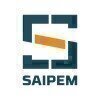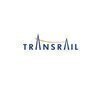
i
Toyo Engineering
Filter interviews by
Toyo Engineering Safety Officer Interview Questions and Answers for Experienced
Toyo Engineering Safety Officer Interview Experiences for Experienced
2 interviews found
I applied via Walk-in and was interviewed in Jun 2022. There was 1 interview round.
(5 Questions)
- Q1. Your salfe safety officer related
- Q2. Safety officer job work
- Q3. Safety officer daily work
- Q4. Safety induction for workers
- Ans.
Safety induction is crucial for workers to ensure they understand the safety protocols and procedures in the workplace.
Provide an overview of the safety policies and procedures
Demonstrate the proper use of safety equipment and tools
Highlight potential hazards and how to avoid them
Encourage workers to report any safety concerns or incidents
Ensure workers understand the consequences of not following safety protocols
Condu...
- Q5. Safety audit related
Interview Preparation Tips
I applied via Naukri.com and was interviewed in May 2021. There were 3 interview rounds.
Interview Questionnaire
2 Questions
- Q1. Filled related questions like details of lifting plan, procedure, permit system, mock drill, inspection, responsibility of safety, tagging system, scaffolding erection and dismantling process and types of ...
- Q2. Introduce yourself, salary structure,
Interview Preparation Tips
Top trending discussions






Interview questions from similar companies

I appeared for an interview in Jan 2025.
(2 Questions)
- Q1. What is hira ?
- Ans.
HIRA stands for Hazard Identification and Risk Assessment. It is a systematic process used to identify potential hazards and analyze the associated risks in a workplace.
HIRA involves identifying hazards that could cause harm, assessing the risks associated with those hazards, and implementing control measures to mitigate the risks.
It helps in creating a safer work environment by proactively addressing potential risks b...
- Q2. What is ua/uc.
- Ans.
UA/UC stands for Unsafe Acts/Unsafe Conditions, which are factors that contribute to accidents in the workplace.
UA refers to actions taken by individuals that are unsafe, such as not wearing proper protective equipment.
UC refers to conditions in the workplace that are unsafe, such as faulty equipment or inadequate lighting.
Identifying and addressing UA/UC is crucial in preventing accidents and promoting a safe work env
(2 Questions)
- Q1. What is jsa. & LOTo system.
- Ans.
JSA stands for Job Safety Analysis, a process of identifying potential hazards in a job task. LOTO system stands for Lockout/Tagout, a safety procedure to ensure dangerous machines are properly shut off and not started up again prior to the completion of maintenance or servicing work.
JSA involves breaking down a job task into steps, identifying potential hazards at each step, and implementing controls to mitigate the r...
- Q2. What is material handling.How many types of Material handing.
- Ans.
Material handling refers to the movement, control, and protection of materials throughout the manufacturing, warehousing, distribution, consumption, and disposal processes.
Material handling involves the movement of raw materials, work in progress, and finished goods within a facility or between different locations.
There are four main types of material handling: manual, semi-automated, automated, and mechanized.
Examples...
Interview Preparation Tips

I appeared for an interview in Feb 2025.
(2 Questions)
- Q1. What is safety and Hazard
- Ans.
Safety refers to the condition of being protected from harm, while a hazard is a potential source of danger.
Safety involves practices and measures to prevent accidents and injuries.
Hazards can be physical (like machinery), chemical (like toxic substances), or biological (like viruses).
For example, a wet floor is a physical hazard that can lead to slips and falls.
In the workplace, safety protocols like wearing PPE (Pers...
- Q2. What is confined space
- Ans.
A confined space is an area not designed for continuous occupancy, with limited entry and exit, and potential hazards.
Defined by OSHA as a space with limited openings for entry and exit.
Examples include tanks, silos, and underground vaults.
May contain hazardous atmospheres, such as toxic gases or low oxygen levels.
Requires specific safety protocols for entry, including monitoring and ventilation.
(3 Questions)
- Q1. What is unsafe act and conditions
- Ans.
Unsafe acts are behaviors that can lead to accidents, while unsafe conditions are environmental factors that increase risk.
Unsafe acts include ignoring safety protocols, such as not wearing personal protective equipment (PPE).
Examples of unsafe conditions are wet floors that can cause slips or poorly maintained equipment that may fail.
Unsafe acts can also involve rushing through tasks, leading to mistakes and accidents...
- Q2. TBT full form and what is TBT
- Ans.
TBT stands for Toolbox Talk, a safety meeting focused on specific topics to enhance workplace safety awareness.
TBTs are brief, informal safety meetings held on-site.
They focus on specific safety issues relevant to the work being done.
Example: A TBT might cover proper lifting techniques to prevent injuries.
TBTs encourage worker participation and sharing of experiences.
They are often conducted before starting a job or ta
- Q3. What is your qualification

I applied via LinkedIn and was interviewed in Mar 2024. There was 1 interview round.
(2 Questions)
- Q1. What are Hazards of Work at Height ?
- Ans.
Hazards of work at height include falls, falling objects, unstable surfaces, and weather conditions.
Falls from height can result in serious injuries or fatalities
Objects falling from height can cause harm to workers below
Unstable surfaces such as ladders or scaffolding can lead to slips or falls
Weather conditions like wind or rain can increase the risk of accidents
Improper use of safety equipment can also contribute to
- Q2. What is Hazard Control Hierarchy ?
- Ans.
Hazard Control Hierarchy is a system used to prioritize and implement control measures to reduce or eliminate workplace hazards.
Hierarchy of controls ranks control measures from most effective to least effective: Elimination, Substitution, Engineering Controls, Administrative Controls, Personal Protective Equipment (PPE)
The goal is to eliminate or reduce hazards at the source rather than relying on PPE
Example: Instead ...
Interview Preparation Tips
Safety Officer Interview Questions & Answers
SHRI GANESH CONSTRUCTIONposted on 2 Feb 2021
Interview Questionnaire
1 Question
- Q1. Safety relative questions and life skill

Safety Officer Interview Questions & Answers
Velammal Medical College Hospital & Research Instituteposted on 19 Jun 2021
Interview Questionnaire
1 Question
- Q1. What is fire
- Ans.
Fire is a chemical reaction that produces heat, light, and flames.
Fire is a rapid oxidation process that releases energy in the form of heat and light.
It requires three elements to sustain: fuel, oxygen, and heat.
Fire can be classified into different types based on the fuel involved, such as Class A (wood, paper), Class B (flammable liquids), Class C (electrical fires), etc.
Examples of fire safety measures include havi...

I applied via Recruitment Consultant and was interviewed in Feb 2021. There was 1 interview round.
Interview Questionnaire
1 Question
- Q1. What is the reason to leave the old Job?
Interview Preparation Tips

Safety Officer Interview Questions & Answers
Gulf Consolidated Contractorsposted on 7 Mar 2021
I applied via Recruitment Consultant and was interviewed before Mar 2020. There were 3 interview rounds.
Interview Questionnaire
8 Questions
- Q1. Introduced yourself after that what is safety ? Confined space Hazard and percution, HIP , excavation Hazard and percution , H2S , saudi Aramco permit system, stringing and lifting heavy equipment safety,...
- Q2. Log out tag out, scaffolding safety and scaffolding colour code.
- Ans.
Log out tag out is a safety procedure used to ensure that dangerous machines are properly shut off and not restarted before maintenance is complete. Scaffolding safety involves proper setup and inspection of scaffolding to prevent falls and other accidents. Scaffolding color code is a system used to identify the load capacity of scaffolding.
Log out tag out involves locking and tagging machines to prevent accidental sta...
- Q3. What is critical lifting ? Give five examples .
- Ans.
Critical lifting refers to the lifting of heavy loads that require special attention and safety measures.
Examples include lifting of heavy machinery, large equipment, construction materials, heavy vehicles, and oversized containers.
Critical lifting requires proper planning, risk assessment, and the use of appropriate lifting equipment and techniques.
It is important to ensure that the load is stable and balanced, and th...
- Q4. What is tandem lifting?
- Ans.
Tandem lifting is a technique of lifting heavy loads using two or more cranes working in unison.
It involves coordination between multiple crane operators.
It is used for lifting loads that are too heavy for a single crane to handle.
Tandem lifting requires careful planning and risk assessment.
The load must be evenly distributed between the cranes to prevent instability.
Examples include lifting large machinery, bridge sec
- Q5. Emergency evacuation procedure of saudi Aramco facilities.
- Ans.
Emergency evacuation procedure of Saudi Aramco facilities
Emergency alarms are sounded to alert personnel
Employees are trained to evacuate to designated assembly points
Emergency response teams are activated to assist in the evacuation process
Regular drills are conducted to ensure preparedness
Evacuation routes and assembly points are clearly marked and communicated to all personnel
- Q6. Ladder safety.
- Q7. Saudi Aramco , CSSP, WSSM,
- Q8. ANSI OF personal protective equipments ,
- Ans.
ANSI is a standard that sets guidelines for personal protective equipment (PPE) to ensure safety in the workplace.
ANSI stands for American National Standards Institute
ANSI sets standards for PPE to ensure they meet safety requirements
ANSI standards cover a wide range of PPE, including helmets, gloves, eyewear, and more
Employers are responsible for providing ANSI-compliant PPE to their employees
ANSI standards are regula...
Interview Preparation Tips
Be confidence during interview, if u don't know the answer of questions which are being asked by interviewer then silent and after that say sorry sir, don't try to explane wrong answer.
Interview Questionnaire
2 Questions
- Q1. Wht is a project
- Ans.
A project is a temporary endeavor with a defined beginning and end, undertaken to achieve a specific goal or objective.
Projects have a specific scope, timeline, and budget
They involve a team of people working together towards a common goal
Examples of projects include building a new bridge, launching a new product, or organizing an event
- Q2. What is a sift time and what is my delery pakag
Interview Preparation Tips
I have a diploma in fire safety and i m pursuing bsc in hsc
Toyo Engineering Interview FAQs
Tell us how to improve this page.
Toyo Engineering Interviews By Designations
- Toyo Engineering Process Engineer Interview Questions
- Toyo Engineering Piping Engineer Interview Questions
- Toyo Engineering Structural Engineer Interview Questions
- Toyo Engineering QA QC Engineer Interview Questions
- Toyo Engineering Engineer Interview Questions
- Toyo Engineering Senior Engineer Interview Questions
- Toyo Engineering Safety Officer Interview Questions
- Toyo Engineering Project Engineer Interview Questions
- Show more
Interview Questions for Popular Designations
- Safety Supervisor Interview Questions
- Senior Safety Officer Interview Questions
- Fire & Safety Officer Interview Questions
- Safety Engineer Interview Questions
- Safety Manager Interview Questions
- Drug Safety Associate Interview Questions
- Safety Supervisor, Safety Officer Interview Questions
- Environment Health and Safety Officer Interview Questions
- Show more
Safety Officer Interview Questions from Similar Companies
Fast track your campus placements
Toyo Engineering Safety Officer Reviews and Ratings
based on 5 reviews
Rating in categories
|
Senior Engineer
124
salaries
| ₹10.5 L/yr - ₹34 L/yr |
|
Piping Engineer
114
salaries
| ₹4.2 L/yr - ₹14.1 L/yr |
|
Senior Assistant Engineer
97
salaries
| ₹5 L/yr - ₹15.2 L/yr |
|
Project Engineer
90
salaries
| ₹4.5 L/yr - ₹18.6 L/yr |
|
Engineer
70
salaries
| ₹8 L/yr - ₹25.5 L/yr |

AECOM

L&T Energy Hydrocarbon

Apco Infratech

Saipem
- Home >
- Interviews >
- Toyo Engineering Interview Questions >
- Toyo Engineering Safety Officer Interview Questions for Experienced














